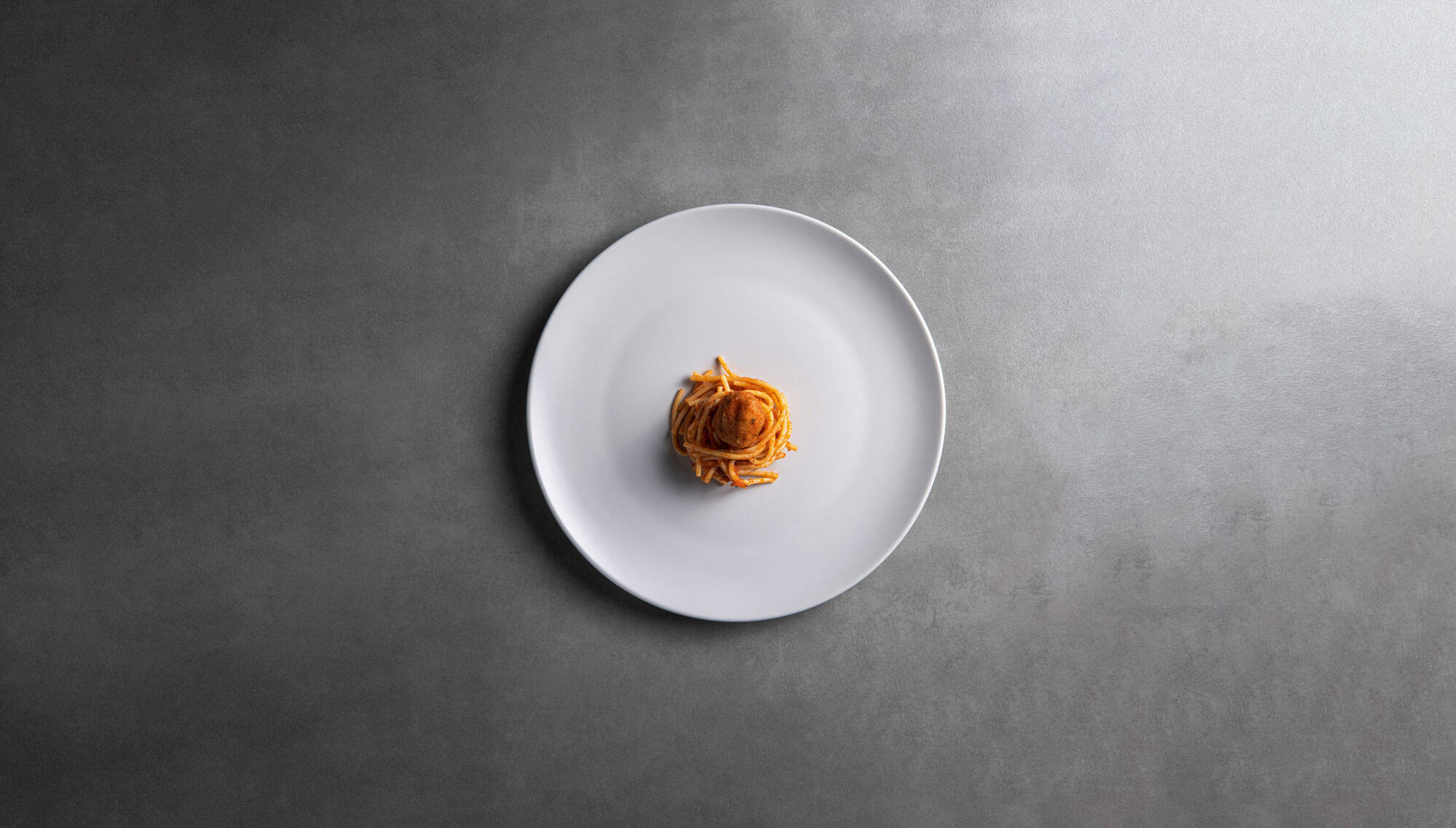Sources
De Vita, O. Z. (2009). Encyclopedia of pasta (Vol. 26). Univ of California Press.
Gray, M. F. (2017). A mass-produced yet" authentic" food: a transatlantic history of pasta, identity, and national values in Italy and the US, 1890 to 1974 (Doctoral dissertation, College of William and Mary).
- Mendel, J.(2008) How Spain uses its noodle, Chicago Tribune
Pasta was first introduced in the United States, between 1880 and 1930, when more than four million Italians immigrated to the United States. Between 1900 and 1930, US Government officials, home economists, and advertisers recast pasta from a food synonymous with negative stereotypes of an immigrant population, into a commodity of no definite ethnicity. Its raw ingredient, durum wheat, promised growth for the Depression’s flagging agriculture and deprived diets. Cookbooks and marketing for national, American-owned pasta brands disassociated the food from Italians in the minds of consumers and linked it to an American way of eating. After World War II, advertising reintroduced pasta to the American public as Italian, an old-world dish evoking cosmopolitan living for postwar modernity. The commodity appeared to democratize cultural capital but devalued the culinary creativity of immigrants.
United States

Spain
Spanish fideo looks a lot like a thinner version of spaghetti. The thin strands may have been invented by the Greeks or the Persians or the Arabs, according to Alan Davidson's "Oxford Companion to Food. The small strands are traditionally served as part of a paella, where their texture complements the flavours of the fish and vegetables. Fideo means noodle, usually used in the plural fideos to mean vermicelli and is also used in a lot of Latin American Kitchens as well as the Philippines, due to the Spanish occupation from the 16th century.

A common belief about spaghetti is that it was brought to Italy from China by Marco Polo during the 13th century, as it is very similar to noodles made of rice flour. But since Polo’s original texts no longer exist, stories rely heavily on retellings by various authors and experts. This, combined with the fact that pasta was already gaining popularity in other areas of Italy during the 13th century, makes it very unlikely that Marco Polo was the first to introduce spaghetti in Italy.
China

Italy
Although spaghetti might originate from the Arabic World. It is where the Italians who started producing the product on a larger scale. By the twelfth century, pasta produced in Sicily and Sardinia was being exported to the mainland Italian territory and Northern Europe.

Food writer Jeffry Steingarten is one of the experts that asserts that Arabs introduced pasta in the Emirate of Sicily during the ninth century, but he also mentions that traces of pasta have been found in ancient Greece.
Greece

Arabic world
Dried pasta, the kinds made with durum wheat, was found in Italy from about 800 AD, It was Arabic occupiers of Sicily who spread the manufacturing and drying technique. A dictionary compiled by the 9th century Arab physician and lexicographer Isho bar Ali, defines itriyya, the Arabic cognate, as string-like shapes made of durum wheat and dried before cooking.














In the past centuries a lot of countries have claimed certain dishes and foods as authentically theirs. For example, when we think of taco’s Mexico pops to mind, coconuts are associated with the caribbean and when we eat pasta we think of Italy. But not all of those assumptions are true. To give you an idea of how diverse the paths of food to certain places can be, we took a closer look at the origins of spaghetti.
Lisa Appels Xiao Er Kong
While most people believe pasta originates from Italy, some historians are convinced Marco Polo brought spaghetti back from his epic voyage to China. While in fact, it probably wasn’t the famous worldtraveller who introduced noodles to the western world. It’s perceived that early versions of the product were brought to Italy from the old arabic world.
infographic
3 min
is spaghetti truly italian?




Sources
De Vita, O. Z. (2009). Encyclopedia of pasta (Vol. 26). Univ of California Press.
Gray, M. F. (2017). A mass-produced yet" authentic" food: a transatlantic history of pasta, identity, and national values in Italy and the US, 1890 to 1974 (Doctoral dissertation, College of William and Mary).
- Mendel, J.(2008) How Spain uses its noodle, Chicago Tribune


Pasta was first introduced in the United States, between 1880 and 1930, when more than four million Italians immigrated to the United States. Between 1900 and 1930, US Government officials, home economists, and advertisers recast pasta from a food synonymous with negative stereotypes of an immigrant population, into a commodity of no definite ethnicity. Its raw ingredient, durum wheat, promised growth for the Depression’s flagging agriculture and deprived diets. Cookbooks and marketing for national, American-owned pasta brands disassociated the food from Italians in the minds of consumers and linked it to an American way of eating. After World War II, advertising reintroduced pasta to the American public as Italian, an old-world dish evoking cosmopolitan living for postwar modernity. The commodity appeared to democratize cultural capital but devalued the culinary creativity of immigrants.
United States

Spain
Spanish fideo looks a lot like a thinner version of spaghetti. The thin strands may have been invented by the Greeks or the Persians or the Arabs, according to Alan Davidson's "Oxford Companion to Food. The small strands are traditionally served as part of a paella, where their texture complements the flavours of the fish and vegetables. Fideo means noodle, usually used in the plural fideos to mean vermicelli and is also used in a lot of Latin American Kitchens as well as the Philippines, due to the Spanish occupation from the 16th century.

A common belief about spaghetti is that it was brought to Italy from China by Marco Polo during the 13th century, as it is very similar to noodles made of rice flour. But since Polo’s original texts no longer exist, stories rely heavily on retellings by various authors and experts. This, combined with the fact that pasta was already gaining popularity in other areas of Italy during the 13th century, makes it very unlikely that Marco Polo was the first to introduce spaghetti in Italy.
China

Italy
Although spaghetti might originate from the Arabic World. It is where the Italians who started producing the product on a larger scale. By the twelfth century, pasta produced in Sicily and Sardinia was being exported to the mainland Italian territory and Northern Europe.


Food writer Jeffry Steingarten is one of the experts that asserts that Arabs introduced pasta in the Emirate of Sicily during the ninth century, but he also mentions that traces of pasta have been found in ancient Greece.
Greece

Arabic world
Dried pasta, the kinds made with durum wheat, was found in Italy from about 800 AD, It was Arabic occupiers of Sicily who spread the manufacturing and drying technique. A dictionary compiled by the 9th century Arab physician and lexicographer Isho bar Ali, defines itriyya, the Arabic cognate, as string-like shapes made of durum wheat and dried before cooking.









In the past centuries a lot of countries have claimed certain dishes and foods as authentically theirs. For example, when we think of taco’s Mexico pops to mind, coconuts are associated with the caribbean and when we eat pasta we think of Italy. But not all of those assumptions are true. To give you an idea of how diverse the paths of food to certain places can be, we took a closer look at the origins of spaghetti.
Lisa Appels Xiao Er Kong
While most people believe pasta originates from Italy, some historians are convinced Marco Polo brought spaghetti back from his epic voyage to China. While in fact, it probably wasn’t the famous worldtraveller who introduced noodles to the western world. It’s perceived that early versions of the product were brought to Italy from the old arabic world.


3 min










